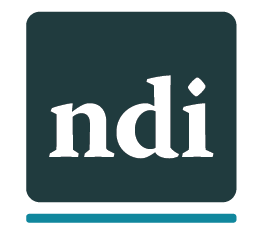What You Need to Know About
Credit
Ver esta página en español.
I want to know about…
- What is a credit score?
- How does your credit score impact different aspects of your life?
- How do I know if my credit score is good or not?
- If you don’t have a good credit score, what are strategies to help enhance your credit?
- Why is it so important to have a good track record of paying back bills on time?
Tools to Build, Maintain and Improve Credit
This webinar, brought to you by Experian, will share how products like Experian Boost™, Experian Go™ and other resources can strengthen financial literacy and help people with disabilities forge a path towards a more secure financial future.
Credit is the option to purchase something now and pay for it later. When someone says you “have good credit” it means you have paid back for things you have purchased using, for example, a credit card or a loan on time and this is what gives you a positive credit history.
Credit Basics
To learn more about the basics of credit, you can access this brief 45-minute online interactive course. The course will cover: What is credit? How credit works? Why having a good credit history is important? You will walk away with a keen understanding of the importance of credit and actionable tips for improving your credit over time.
During your life, there will be many times when your credit score can help you save money and qualify for things like renting an apartment, signing up for utilities, getting an affordable loan for a car and possibly even being hired for some types of jobs. It is important to build a positive history using credit. You can do this in different ways such as opening a credit card or using a credit-builder loan to show your responsible repayment habits.
When someone says that you have good or bad credit, they are referring to your credit history. Your credit history is a record of how you have repaid debt in the past. A credit history is assembled by the three credit bureaus: Experian, TransUnion and Equifax. It lists records of loans, credit cards, missed utility bills, medical debt and more that have been reported to the credit bureaus, all in one place. This information is then scored by a credit scoring company, and the score number may fall into an “excellent,” “very good,” “good,” “fair” or “poor” range.
People with scores that fall into the “good” to “excellent” range generally borrow a small amount of their credit limit; this is referred to as low credit utilization. They also have a history of on-time payments and tend to have a mix of different types of credit accounts that have been open for several years. “Good” scores fall between 661 and 780 on the VantageScore model or 670 and 739 on the FICO® range.
Your credit history tracks how you have handled and paid back debt. It is recorded in your credit report. It makes note of things like your payment history on credit card accounts, car loans, mortgages, student loans and more.
Importantly, the status of these accounts is regularly updated so your credit history shows an accurate account of recent on-time payments and any outstanding balances.
If you do not have a credit history or have a thin credit file it likely means you have not had a credit card, loan or another type of account that is reported on your credit report. Nothing or very little has been reported to the credit bureaus showing that you pay credit on time to make your credit report, which may mean you are unscorable. People with no credit histories are sometimes referred to as “credit invisible.”
A thin file means you may have some credit history established, but not enough accounts and payments to give scorers a complete view of your history with using credit. Having a thin file can make it difficult to get the best rates and terms even when you are approved for credit.
You build a positive credit history by taking steps to be approved for credit and then actively using and responsibly managing your credit. This can be done with good habits such as making on-time payments on any credit or loans.
Start by getting a credit card such as a starter card or secured card made for people new to credit. You can also get a credit-builder loan, which is a loan specifically designed to help you build credit.
The way a credit-builder loan works is that you first start by making a small deposit each month into a credit-builder account. The deposits are called installment payments. When you complete making all of the required deposits, you will then get the total balance back, possibly with interest.
The better your credit history, the more likely you are to get lower interest rates when shopping for a home. That’s because the terms of getting extended new credit, such as a mortgage, are based on your previous debt history.
Getting good interest rates can save you thousands of dollars over the lifetime of a mortgage. For example, on a mortgage for $200,000, a 3% interest rate will equal $103,554.90 in interest payments. A 4% interest rate would equal $143,739.01. That 1% difference could save you $40,184.11!
A credit score is a three-digit number that predicts how likely you are to pay back a loan on time based on information from your credit reports. It is important to know that you do not have just one credit score. There are many credit scores available to you as well as to lenders.
Your credit score is meant to represent one thing: how well you pay back debts. It tends to most frequently impact your ability to get more credit.
However, many official organizations also may use your credit score to predict behaviors for the future. Your credit score may impact your life during the following events:
- Applying for a credit card or a loan
- Getting a mortgage
- Renting an apartment
- Signing up for utilities
- Interviewing for a job
- Purchasing insurance
Because your score can be used so widely, it’s important to frequently review and keep your credit history in good shape.
A good credit score is around 700. Credit scores typically range from 300 to 850 depending on the different models used to calculate the score, such as a FICO Score.
Credit-building is a series of actions meant to add a history of paying back debt to your credit report and improve your credit score. Each positive credit move you make can help to make up for past missteps and rebuild your credit. Some important steps to take are:
- Make all your payments on time. Payment history is the biggest factor in your credit score. Payments made toward credit cards, lines of credit and loans that are reported to the credit bureaus are all part of your payment history.
- Keep your credit utilization low. Credit utilization is the ratio measuring how much of your available credit you’re using. Credit utilization should be below 30% to prevent harming your score and ideally under 10% for optimal scores. For example, if the only card you have has a credit limit of $1,000, ideally only $100 total should be borrowed at any given time.
- Clean up collections. If you have any accounts in collection, resolving these debts is an important step to repairing your credit.
Your payment history accounts for about 35% of your FICO® credit score. Having a good history of on-time repayment is one of the best ways to build up a good credit score because it is the largest factor in your credit score. Building your credit score with on-time payments can help you access better rates and terms sooner.
A credit report or credit history is a record of your repayment habits with debt such as loans or credit cards. Your credit report is typically used by lenders to evaluate your creditworthiness for new credit accounts.
The type of information contained on your credit report includes:
- Your current name and any past names
- Your current address and address history
- Employer history
- Credit and loan accounts
- Payment history for open and closed credit and loan accounts
- Records of accounts turned over to collections
- Bankruptcy records
- Hard inquiries from when a creditor pulled your credit report for a loan application, which may have dropped your score
- Soft inquiries from when a creditor pulled your credit report to offer a prequalification with no impact to your score
You can check your annual credit report—or ACR—for free by going to annualcreditreport.com.
By Phone: Call 1-877-322-8228. Deaf and hard of hearing consumers can access the TTY service by calling 711 and referring the Relay Operator to 1-800-821-7232.
You can request copies of your credit report from each of the three credit bureaus: Experian, Equifax and Transunion. You are entitled to a free copy of your credit reports once every 12 months* from each of the three credit bureaus.
Accessible versions of your credit report are available in large print, Braille or audio format.
* As part of the CARES Act, consumers can order a report from each of the bureaus weekly until April 20, 2022.
When you get a credit report, first look it over and see if you recognize each account. If you are uncertain about anything listed, you can contact the account issuer to confirm that you have an open account with that company and find out the account’s balance.
You may see an account under a name you don’t recognize but perhaps with a balance similar to one of your credit cards. This could be because credit cards associated with certain retailers, or stores, may be listed under the name of the bank they work with and not their store name. Before assuming a mistake, verify whether or not the account listed is the bank who holds your credit account or not.
Be aware that amounts may not line up exactly. That’s because you may have paid a bill or made more purchases on an account after the month your data had been reported to the credit bureau.
If you’re not able to confirm the account, or see an amount that does not make sense, it is important to open a dispute with the credit bureau so that they can verify the accuracy of the data.
If you find an error or inaccuracy in your credit report, there are steps you can take to officially dispute the information and seek a resolution with the credit agency, including:
-
- Find the dispute center of the bureau that issued the report; if the error shows on all three credit reports, you will need to contact all three bureaus (Experian, TransUnion and Equifax).
- Start a new dispute. You may be able to do this online, in an app or through the mail.
- Once you submit your dispute, you may need to wait a bit for the dispute process to be completed while the bureau contacts whichever company sent the potentially incorrect information.
If the dispute resolves and you still disagree with the outcome, there are some further steps to take such as:
-
- Reach out to the company that submitted the information to the credit bureau and explain why the information is inaccurate.
- Add a statement of dispute to your credit report. This is an additional statement of limited length that you may add to your credit report explaining why you feel the information is inaccurate.
- Re-submit your dispute if you have new information that may support your claim.
A credit card lets you borrow money from a financial institution. Each card has a credit limit, which is the maximum amount of money you may borrow, set by that financial institution. When you use the credit card to make a purchase(s), there is a minimum amount that must be paid back each month. However, it is important to remember that, if you pay the balance on your credit card in full each month, you can save money by not having to pay the interest that would otherwise be charged each month when the balance is not paid in full. Learn more about keeping your credit utilization low.
Credit cards charge interest on the money you borrow. If you pay off the total balance by the billing cycle due date, there is no charge. You are charged interest—a percent of your total balance—on any balances that roll over to the next billing cycle.
When you take out a loan, you agree to a set of terms. These outline the amount of each monthly payment, the interest rate you will be charged for using this money, the payment due date and the length of the loan. The monthly payments consist of a fraction of the amount you borrowed plus the interest charged.
It is your responsibility to pay the full amount by the due date each month for the entire length of the loan. If you do not, the lender may charge fees and, after 30 days, report a late payment to the credit bureaus, which can hurt your credit score.
There are two reasons why it is better to pay back more than your minimum credit card payments every month.
The first is that you owe interest on any amount of credit card debt that rolls over to the following billing period. Therefore, you save yourself money in the long term by paying off as much as possible each month. The more you pay off, the less interest you’ll build up to have to pay back.
Second, when you pay down your credit balance regularly, you will likely have a lower credit utilization, which can help your credit scores. Credit utilization is the ratio of credit you’re currently using compared to how much is available. It is part of the scoring formula, and the lower your ratio the better, with a credit utilization of under 10% being ideal.
Before taking out a loan, you should take some time to make a spending plan so you can be sure that you will be able to pay back the loan. A spending plan lists all your expenses (everything you spend money on) and all your income (the money you have coming in regularly) on a monthly basis. The total of your income minus the total of your monthly expenses equals the amount a person can afford to save or possibly pay towards a new loan monthly payment. This will help to show you how much you will be able to afford to pay back as a monthly payment. Or if you would have to budget differently to make payment possible.
Remember the 4 C’s of credit:
- Character: Your character, or creditworthiness, is one of the biggest deciding factors in getting a loan. That’s why your credit report is a big part of the decision process for granting you a loan. Monitor your credit in the months ahead of your loan application to make sure it’s in the best shape possible and this will give you the best odds of getting approved.
- Collateral: Many loans will require some collateral. This is what the bank will claim if you default on the loan. For example, the house acts as collateral on a mortgage.
- Capacity: When considering a borrower’s potential capacity, lenders look at their debt-to-income (DTI) ratio. DTI compares how much debt a borrower has compared to their income. A good DTI for getting a mortgage tends to be under at most 43% and preferably under 36%. For example, a DTI ratio of 36% means that the total debt this person has represents 36% of their total income.
- Capital: Capital is the measure of how much saved money a borrower has and can contribute as part of the payment towards the purchase of goods or services. A down payment for a vehicle is an example of capital.
It is important to keep your personal credit separate from your business credit because you don’t want your personal credit profile to be impacted by business debt. Business and personal accounts are kept on separate credit reports when opened correctly, which protects the holder of both.
For example, if you need to purchase several vehicles for your business, you will not want it to affect your personal mortgage application. If you had the loans for the business vehicles in your own name, it could increase your debt-to-income ratio—the amount of debt you have compared to your income—and make it more difficult to take out a personal mortgage.
Business credit is credit extended to a business, such as a small business loan or a business credit card. It is typically recorded in a business credit report. Personal credit is any credit extended to an individual, such as credit cards and student loans.
A person who is a business owner may hold both business and personal credit accounts. These credit accounts may be recorded on separate business credit reports and personal credit reports.
View More Resources
Get resources right to your inbox!
The Financial Resilience Center was developed by National Disability Institute with generous funding from the Wells Fargo Foundation.





